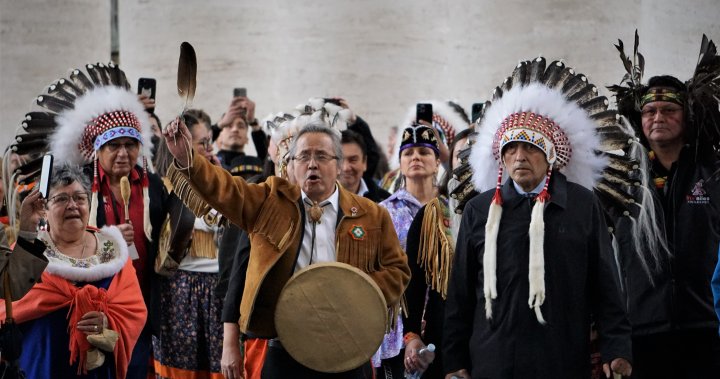
Indigenous delegates hope to inspire as world watches Canada’s reconciliation story unfold
Global News
Progress made by First Nations, Métis and Inuit peoples in Rome has already caught the attention of Native American boarding school survivors in the United States.
Warning: This story deals with disturbing subject matter that may upset and trigger some readers. Discretion is advised.
Italian filmmaker Raffaele Manco watched in horror from Rome as 215 unmarked burial sites — likely the remains of children — were detected on First Nations land in Canada.
The gut-wrenching news from Tk’emlúps te Secwépemc in British Columbia last spring made headlines around the world, a painful reminder that Canada’s residential school system was deadly for thousands of Indigenous children.
The disclosure prompted in-depth searches of former school sites that have since detected more than 1,800 possible or confirmed unmarked graves across the country.
As he scoured online article after article, it also moved Manco so deeply he decided to make a film.
“It was the last of many things that impacted me,” he said in Rome, his camera equipment sprawled over the nearest table at a hotel not far from the Colosseum. “The consequences of colonialism are not in the past. It’s something that’s here today and is not considered enough.”
Since Tk’emlúps te Secwépemc’s tragedy, the world has been watching Canada’s reconciliation story unfold.
Half a dozen international media outlets dispatched reporters to cover the historic delegation to Rome between March 28 and April 1, including Manco and his documentary film partner, Italian journalist Irene Sicurella.











